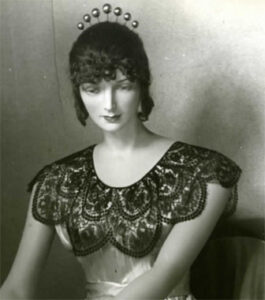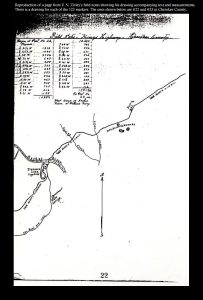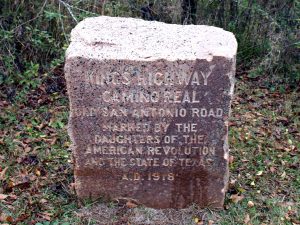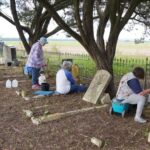Historic Gown Collection at Texas Woman’s University
To commemorate the Golden Jubilee of the National Society, Daughters of the American Revolution (NSDAR) in 1935, state societies throughout the United States were asked to develop a special project. Marion Day Mullins, who was Regent of the Texas Society 1937-1940, selected as Texas’ project the creation of a collection of historic gowns honoring the First Ladies of Texas, modeled after the collection of First Ladies Gowns at the Smithsonian Museum in Washington, DC. At the Texas State Conference during Miss Mullin’s term, the project was adopted.
All the chapters in the state were invited to participate, and in 1938 a letter went out from the State Historian of Texas, Mrs. George T. Spears, asking for chapters to choose a governor’s wife, write a short biographical sketch, secure her inaugural gown and accessories, and if possible donate the mannequin for the gown. In addition, chapters were asked to donated furnishings and accessories to accompany the gowns.  At that time, it was also decided to include gowns of prominent women with deep ties to Texas.
At that time, it was also decided to include gowns of prominent women with deep ties to Texas.
The project was successfully completed and the Texas Society chose to donate the collection to Texas Woman’s University, then the Texas State College for Women. The collection was originally called “The DAR Museum.” Since that time, Texas Woman’s University has continued its stewardship of the collection and it has been added to through the present.
Texas DAR King's Highway Project
The King’s Highway, also known as El Camino Real and the Old San Antonio Road, played a vital part in the history and development of the state for more than 400 years. It was used as a trade route by the Indians and French traders. It was an exploration route used by the Spanish and French. It also served as a military highway for the Mexican and Texas armies and as a migration route for the many immigrants traveling westward.

Reproduction of a page from V. N. Zivley's field notes showing his drawing accompanying text and measurements. There is a drawing for each of the 123 markers. The ones shown are #22 and #23 in Cherokee County.
The decision to place commemorative markers along the King’s Highway was made at the Texas Society Daughters of the American Revolution (TXDAR) State Conference in Galveston in November 1911. One hundred and twenty-three pink granite markers spaced every 5 miles were placed along the route. On March 2, 1920 the markers were dedicated and given as a gift to the State of Texas. Mrs. Lipscomb Norvell, State Regent 1918-1920, who was responsible for the project from its inception, published a detailed history of the highway titled, King’s Highway: The Great Strategic Military Highway. Read her book online at haithitrust.org
As a part of the Texas Society DAR Centennial celebration in 1995, the decision was made to locate and rededicate as many of these markers as possible. A copy of Major V.N. Zively’s original survey was located and copied from the Texas State Archives for this purpose. Since then, chapters and individual Daughters have been involved in finding, repairing, documenting and rededicating these markers. As of February 2006, all but nine of the 123 markers had been located.
Texas DAR Historical Marker Project
One of the main objectives of the Daughters of the American Revolution is to protect historical spots and erect monuments to preserve American History for future generations.
The first marker placed in Texas by the DAR was in 1917 at the spring where the Huaco (Waco) Indians camped and early settlers crossed the Brazos River. In 1936 the Texas Society published a book featuring markers placed by DAR at historical sites in Texas. The book, entitled “Markers Placed by the Texas Daughters of the American Revolution” with illustrations and historical sketches, is currently being revised to include later markers placed. For information about the location of markers, please contact our State Historian.
American Revolutionary War Patriots Buried in Texas
There are 45 known American Revolutionary War patriots buried in Texas. The Texas Society DAR since 1908 has worked diligently to document all Revolutionary War patriots who died in Texas. Alexander Hodge who died in Houston, Texas, was the first grave marked by the DAR in 1908. In 2006 the DAR Patriot Monument was erected by the Texas Society DAR in the State Cemetery in Austin, Texas. The names of both Anglo and Hispanic American Revolutionary War patriots are inscribed on the cenotaph. The map below provides more information about the individual patriots.








